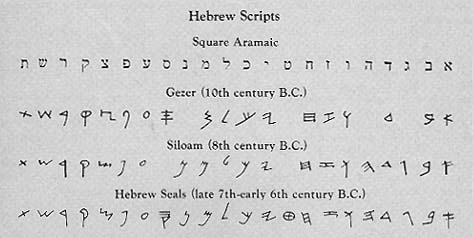Image Details

The earliest Hebrew script is called Phoenician or paleo-Hebrew. It was used exclusively until the sixth century, when the Jews returned to Israel from the Babylonian Exile and brought with them the square Aramaic script. The two scripts existed side by side until after the Second Jewish Revolt (132–135 A.D.) when the Aramaic script came into exclusive use except by the Samaritans who continue to use paleo-Hebrew letters even to this day.
The chart shows the modern square Aramaic script and three examples from different centuries of paleo-Hebrew alphabets. The alphabet from the 10th century B.C. Gezer Calendar is incomplete because certain letters are missing from the tablet. Note that the samekh on Superman’s chest (“The Hebrew Origins of Superman”) is the one from the Gezer calendar.
